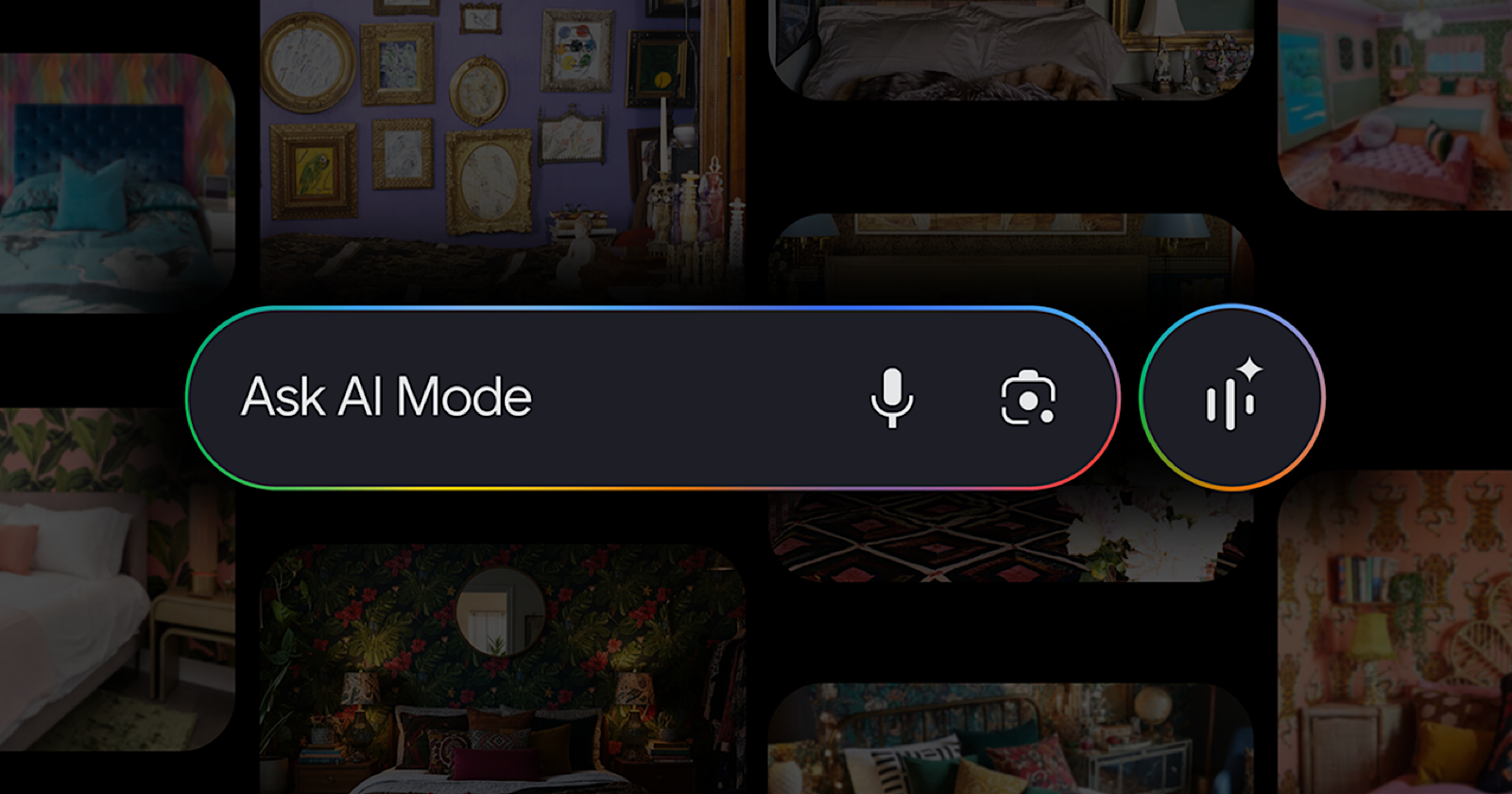Google announced that AI Mode now supports aesthetic search, letting you use images and all-natural language with each other in the same conversation.
The upgrade is presenting this week in English in the U.S.
What’s New
Visual Browse Gets Conversational
Google’s upgrade to AI Mode aims to resolve the difficulty of looking for something that’s hard to define.
You can begin with text or a photo, then improve results normally with follow-up concerns.
Robby Stein, VP of Item Management for Google Browse, and Lilian Rincon, VP of Product Monitoring for Google Purchasing, wrote:
“We’ve all been there: looking at a display, looking for something you can’t rather take into words. But suppose you could just show or tell Google what you’re assuming and obtain an abundant variety of visual results?”
Google gives an example that begins with a search for “maximalist bed room inspiration,” and is refined with “more alternatives with dark tones and vibrant prints.”
Each image web links to its resource, so searchers can click through when they find what they want.
Buying Without Filters
As opposed to utilizing conventional filters for design, dimension, shade, and brand name, you can explain products conversationally.
For example, asking “barrel pants that aren’t also droopy” will find ideal items, and you can limit choices further with requests like “show me ankle length.”
This experience is powered by the Shopping Graph, which spans more than 50 billion product listings from significant stores and regional stores.
The firm claims over 2 billion listings are freshened every hour to maintain details such as evaluations, bargains, available colors, and stock condition as much as day.
Technical Structure
Building on Lens and Picture Browse, the aesthetic capabilities currently consist of Gemini 2 5’s innovative multimodal and language understanding.
Google introduces a strategy called “visual search fan-out,” where it runs several relevant inquiries in the background to far better grip what remains in a photo and the subtleties of your concern.
Plus, on mobile devices, you can look within a certain picture and ask conversational follow-ups regarding what you see.
Additional Context
In a media roundtable gone to by Internet search engine Journal, a Google speaker said:
- When a question consists of subjective modifiers, such as “too saggy,” the system may utilize personalization signals to presume what you most likely mean and return results that better match that choice. The agent really did not detail which signals are used or how they are heavy.
- For image sources, the systems don’t clearly separate real photos from AI-generated pictures for this attribute. Nonetheless, ranking may favor results from reliable sources and other high quality signals, which can make real images more probable to show up sometimes. No different policy or detection standard was shared.
Why This Issues
For SEO and ecommerce teams, images are coming to be a lot more vital. As Google improves at recognizing thorough aesthetic signs, top notch product pictures and way of living photos might boost your visibility.
Because Google updates the Shopping Graph every hour, it’s important to keep your item feeds accurate and updated.
As search continues to become a lot more visual and conversational, keep in mind that many purchasing experiences may begin with a simple image or a laid-back summary rather than exact key phrases.
Looking Ahead
The new experience is turning out this week in English in the U.S. Google hasn’t shared timing for various other languages or regions.
Advised AI Advertising Equipment
Disclosure: We might make a payment from affiliate links.
Original insurance coverage: www.searchenginejournal.com


Leave a Reply